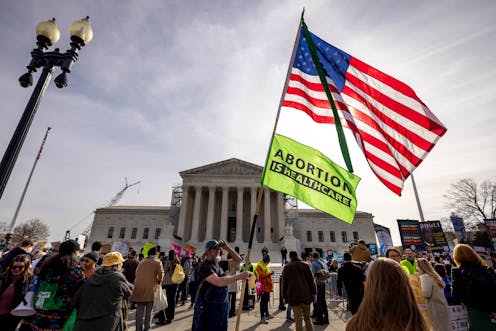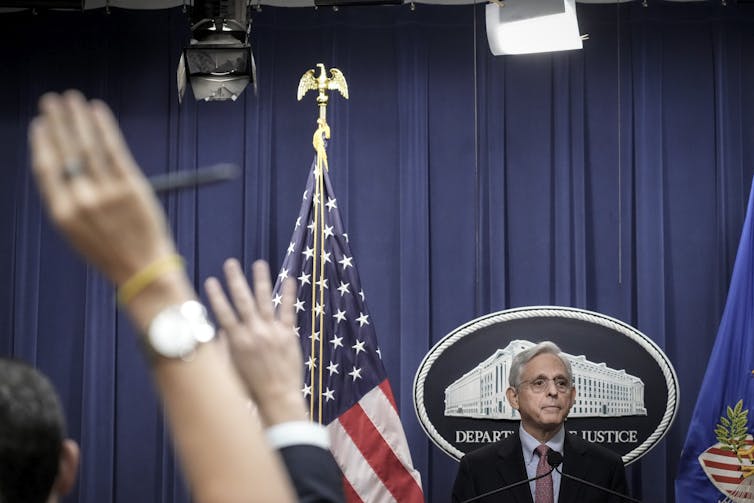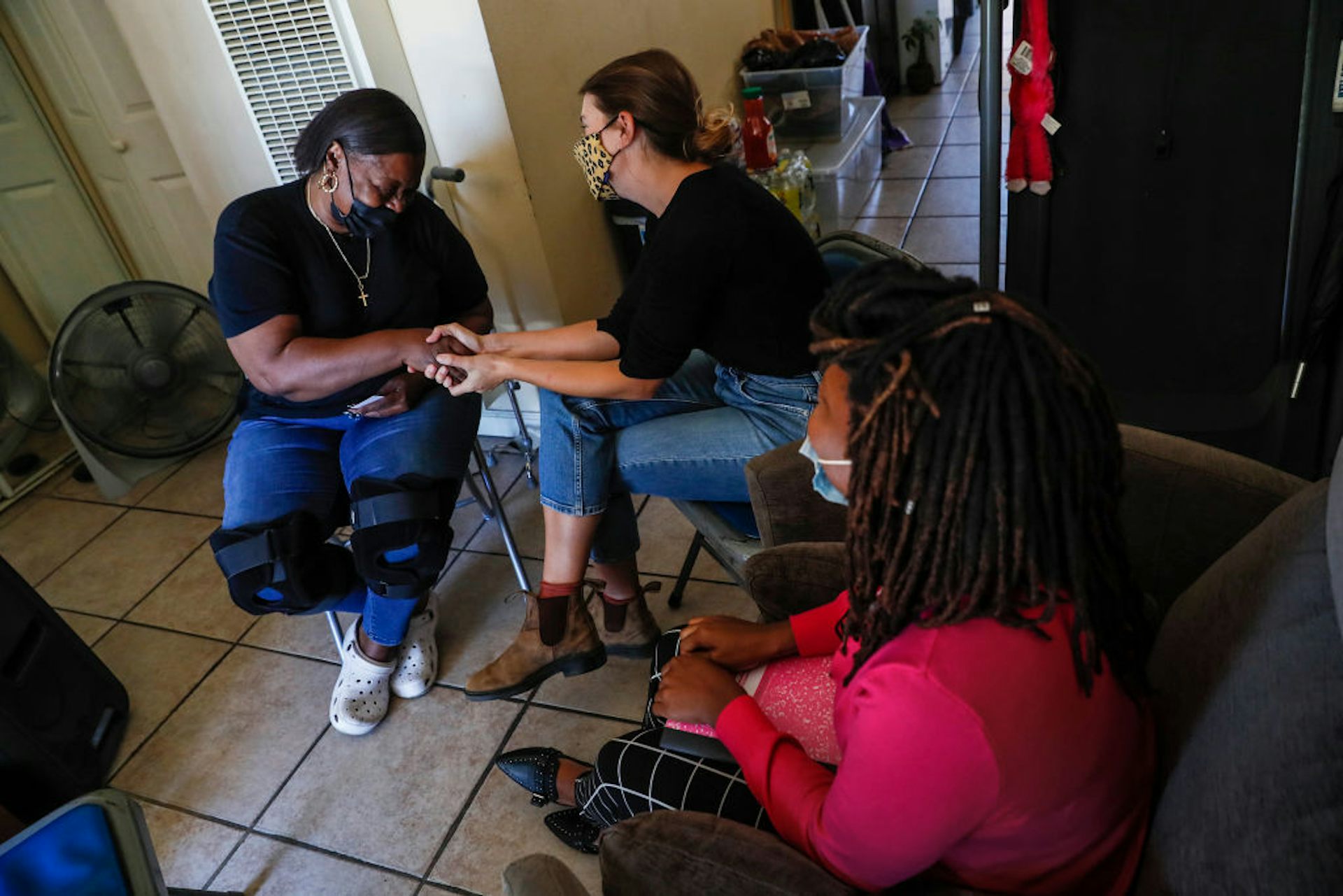Can states prevent doctors from giving emergency abortions, even if federal law requires them to do
EMTALA requires hospitals to provide stabilizing treatment to all patients – but Idaho is arguing that its abortion ban means it doesn’t have to allow the procedure, even if it is medically needed.

Hospitals across the country have long operated under the same federal law that says they must treat and stabilize all patients when they have a medical emergency.
But in states that now ban abortions and have limited or no health exceptions to these restrictions, medical providers face an impossible situation. They can administer a medically necessary abortion and violate state law, potentially facing jail time and losing their licenses, or they can decide not to provide the abortion and violate federal law, potentially resulting in the patient experiencing significant harm or even dying.
The Supreme Court is set to hear oral arguments on this legal conflict on April 24, 2024, when it considers Moyle v. United States. This case centers on the federal law, known as the Emergency Medical Treatment and Labor Act, or EMTALA, which was designed to prevent hospital emergency rooms from refusing to treat patients who couldn’t pay.
It is the second abortion case that the Supreme Court will consider in 2024. In the first case, the court heard arguments about regulations that affect the nationwide availability of mifepristone, a pill used to induce abortion.
EMTALA requires hospitals that receive Medicare funding to provide stabilizing care to all patients if their health – or, for pregnant people, “the health of the woman or her unborn child” – is in “serious jeopardy.”
Almost all hospitals in the country get Medicare funding, so this law applies to nearly all of them.
As scholars of reproductive justice, we believe that this case has implications that stretch well beyond abortion and into other thorny issues, like the legal status of a fetus and the ability of state lawmakers to dictate medical care.
What led to the Supreme Court case
Shortly after the Supreme Court overturned the federal right to get an abortion in June 2022 in Dobbs v. Jackson Women’s Health Organization, the U.S. Secretary of Health and Human Services reminded doctors that they must provide medical treatment if a pregnant person has an emergency medical condition. And if an abortion is the best “stabilizing treatment necessary” to help the pregnant person, they must offer it.
The letter emphasized that this federal requirement applies even if the physician is practicing in a state with an abortion ban that doesn’t include exceptions for the “life and health of the pregnant person.”
At least seven states, including Arizona, Arkansas, Idaho, Wisconsin, Oklahoma, Mississippi and North Dakota, currently have abortion bans that do not include a health exception.

Enforcement questions
In August 2022, the U.S. sued Idaho, challenging its abortion ban. Idaho criminalizes virtually all abortions except to save the life of the mother. It does not provide an exception to protect the pregnant person’s health.
But EMTALA requires emergency care in order to prevent serious harm to the individual’s health – not just to prevent death.
The U.S. argued that Idaho’s law “directly conflicts with” EMTALA. Idaho argued that EMTALA effectively required all states to provide abortions, even if the procedures conflict with state law. The district court decided that EMTALA’s requirement of emergency medical care overrode any contrary state law.
The case was appealed to the U.S. 9th Circuit Court of Appeals, which ultimately agreed on Oct. 10, 2023, to consider the case. In the meantime, it left the state law unaffected.
On Nov. 20, 2023, Mike Moyle, speaker of the Idaho House of Representatives, asked the U.S. Supreme Court to let the Idaho ban remain in effect. Idaho also asked the Supreme Court to consider the case.
In January 2024, the Supreme Court agreed to consider whether EMTALA can override state abortion bans when the two conflict. It also allowed the Idaho law to remain in effect while the case made its way through the courts.
That means that no doctors in Idaho can perform an abortion in the case of a serious medical emergency, unless the pregnant person is on the verge of death.
What is at stake
How the Supreme Court ultimately rules in this case has implications with respect to abortion and beyond.
In the seven states where abortion bans conflict with EMTALA, patients may be denied appropriate emergency care they would have otherwise received. For example, if a woman experiences an ectopic pregnancy, in which the fertilized egg is growing outside of the uterus, health providers are limited in what kind of treatment they can provide.
Depending on the stage of pregnancy, ectopic pregnancies are typically terminated with medication or surgery. Ectopic pregnancies are never viable. But if they are not ended, the fertilized egg would develop outside the uterus, causing great risk to the pregnant person’s life and fertility.
Other pregnancy complications that may require an abortion include separation of the placenta from the uterus, as well as preeclampsia, eclampsia and heart or kidney conditions.
Physicians in states with abortion bans may fear steep criminal sanctions if they provide an abortion in these cases. Instead, they may decide the best way to avoid criminal liability is to wait until the patient is on the brink of death. But because it is impossible to measure precisely how close someone is to dying, this approach risks patient death or serious bodily harm, as well as loss of fertility.
The EMTALA case could also play an important role in the ongoing debate about whether fetuses are persons. Idaho, for example, argues that EMTALA requires the pregnant patient and “the unborn child” to be treated equally.
Another issue that may arise is whether a hospital’s moral or religious objection to abortion allows it to deny abortions, even when EMTALA would require one.
Finally, if the Supreme Court decides that EMTALA does not override state law, the ruling could open the door for states to try to limit other kinds of emergency medical care, like HIV treatments or mental health care.
Of course, the court could decide that EMTALA prevails over state law, allowing for abortions to protect the pregnant person’s health from serious jeopardy. Given the court’s holding in Dobbs, however, which returned the question of abortion to the states, that does not seem likely, in our view.
The authors do not work for, consult, own shares in or receive funding from any company or organization that would benefit from this article, and have disclosed no relevant affiliations beyond their academic appointment.
Read These Next
Racial profiling by ICE agents mirrors the targeting of Japanese Americans during World War II
Asian Americans have drawn parallels between today’s attacks on Latinos and a historically exclusive…
Illness is more than just biological – medical sociology shows how social factors get under the skin
Medical sociology examines how social, cultural, political and economic factors shape health in ways…
The western US is in a snow drought – here’s how a storm made it worse
A major atmospheric river brought record precipitation to the Pacific Northwest, yet the snow and water…





